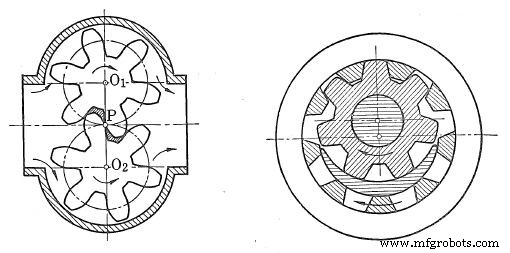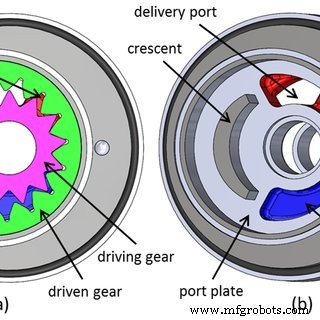O que faz com que uma bomba não crie pressão?
Uma bomba é uma máquina que ajuda a mover o fluido de um lugar para outro. Quando algo dá errado com uma bomba, pode fazer com que o fluido não se mova ou se mova lentamente. Neste artigo, exploraremos o que faz com que uma bomba não aumente a pressão e como você pode consertar isso.
O que é uma bomba?
Uma bomba é uma máquina que transfere fluido, líquido ou gasoso, de um local para outro. As bombas são usadas em muitas indústrias diferentes, incluindo estações de tratamento de água e fábricas de produtos químicos.
A falha da bomba pode ser causada por uma variedade de fatores, incluindo filtros entupidos, rolamentos gastos e vedações quebradas. Em muitos casos, no entanto, a causa da falha da bomba é mais complexa e requer uma investigação mais aprofundada.
Aqui estão algumas causas comuns de falha da bomba:
-Entupimento do filtro:Os filtros são componentes importantes da maioria das bombas. Se eles ficarem entupidos, a bomba não será capaz de transferir fluido adequadamente. Isso pode causar danos à bomba e até causar falhas. Para evitar que isso aconteça, verifique regularmente o estado do filtro e substitua qualquer um que pareça estar entupido.
- Rolamentos gastos:Os rolamentos de toda a máquina podem se desgastar com o tempo. Se isso acontecer, os rolamentos não permitirão que a bomba se mova livremente e acabarão falhando. Para evitar que isso aconteça, verifique regularmente e substitua qualquer um que pareça estar desgastado.
- Vedações quebradas:Vedações são componentes importantes das bombas que ajudam a manter a água ou o gás fluindo sem problemas. Se eles quebrarem,

Como funcionam as bombas?
Uma bomba funciona movendo o fluido para dentro e para fora de um tanque ou recipiente. A pressão dentro do tanque ou recipiente determinará a rapidez com que o fluido pode fluir. Se a pressão for muito baixa, a bomba não conseguirá mover o fluido tão rápido e será menos eficaz.
Quais são as causas de uma bomba não acumular pressão?
Existem algumas coisas que podem fazer com que uma bomba não aumente a pressão. Um problema comum é a baixa pressão causada por um filtro de bomba entupido. Outro problema são as baixas taxas de fluxo devido à capacidade insuficiente da bomba. E, finalmente, uma bomba pode estar com defeito.
Quais são as causas de uma bomba não acumular pressão suficiente?
Configurações incorretas na bomba:
A causa mais comum de uma bomba não acumular pressão suficiente são as configurações incorretas da bomba. Se a vazão ou a pressão de sucção não estiverem corretas, a bomba não pode criar a pressão hidrostática necessária para empurrar a água pelo sistema.
Os diferentes fatores que podem estar fazendo com que sua bomba crie menos pressão.
Existem algumas coisas diferentes que podem estar fazendo com que sua bomba não aumente a pressão:
-A pressão do ar no tanque é baixa. Isso pode ser causado por um vazamento, um medidor defeituoso ou baixa pressão de ar externa. If the pressure is low enough, the pump will not work at all.
-The pump has not been installed correctly. Make sure the pump is properly connected to the tank and fittings, and that the hoses are properly routed.
-The pump’s motor is not working. Test the motor by plugging it into an outlet and turning it on. If it doesn’t work, replace it.
What should be done when the pump doesn’t build pressure?
Frequent causes of low pump pressure include:
– Dirty or clogged filters. Clean them regularly or replace them.
– Old or defective parts. Replace them as needed.
– Insufficiently sized tubing. Increase the size if necessary.
– Low engine oil pressure. Check the oil level and add more if necessary.
Steps to take if your pump fails to build pressure
If your pump fails to build pressure, there are a few steps you can take to troubleshoot the issue.
1. Check the priming line – Make sure the priming line is not clogged or broken. If it is, debris can block the pump’s ability to prime properly.
2. Check the suction pipe – Make sure that the suction pipe isn’t blocked or clogged. If it is, debris can accumulate and block the pump’s ability to draw water.
3. Check the pump head – Make sure that the pump head isn’t bent or damaged. If it is, the pump may not be able to create enough pressure to circulate fluid through the system.
Other factors that could be causing low pressure in the tank
There could be a number of reasons why the pump might not be able to build pressure in the tank. One possibility is that there is something blocking the flow of water through the pump. This could be caused by debris, leaves, or ice buildup on the pump blades. Another possibility is that there is a problem with the plumbing connecting the pump to the tank. If there is a clog in the pipe, water will not be able to flow freely and pressure won’t be able to be built up in the tank.

Steps to take when trying to increase pressure
When trying to increase the pressure of a pump, it is important to take certain steps in order to prevent damage. Often times, these steps are as follows:
-Check the suction hose for obstruction or kinks. This can be caused by debris or materials caught in the hose, which will decrease the flow of air and water. If this is the case, remove any obstructions and try again.
-Make sure that the pump is properly installed. If it’s not level or if there are any other irregularities, this will also affect pressure.
-Ensure that all valves and fittings on the system are open and free from blockages. This includes both manual and automatic valves.
How can you troubleshoot a pump issue?
If you are experiencing a pump that is not building pressure, there are a few things that you can do to troubleshoot the issue. First, make sure that your pump is plugged into an outlet and that it is turned on. Also, make sure that your hoses are connected properly and that there is nothing blocking the flow of water into or out of the pump. Finally, check to see if there is any debris or sediment in your pump’s filter. If all of these steps fail to solve the issue, you may need to replace your pump.
Conclusão
As athletes, we are constantly striving to increase the pressure in our muscles. This is done by contracting our muscle fibers and pushing blood against the myocardium (the layer of heart muscle responsible for pumping blood). However, sometimes this process can falter and a pump may not be able to build pressure. There are many potential causes for this problem, but the most common one is fatigue. If you’re experiencing difficulty building pressure during your workout, make sure to take a break and assess whether you need more rest or if there is another issue at hand.
What causes a pump not to build pressure, please click topkitparts see more
Equipamento industrial
- O que causa amarras na impressão 3D?
- O que é uma bomba Jockey?
- O que é uma bomba manual?
- O que é uma bomba de pressão para casa?
- O que é uma bomba hidráulica radial?
- O que faz com que uma bomba hidráulica perca pressão?
- O que é BHP em bombas?
- O que causaria a perda de pressão de uma bomba hidráulica?
- O que um VFD faz em uma bomba?
- o que causa a cavitação da bomba hidráulica



